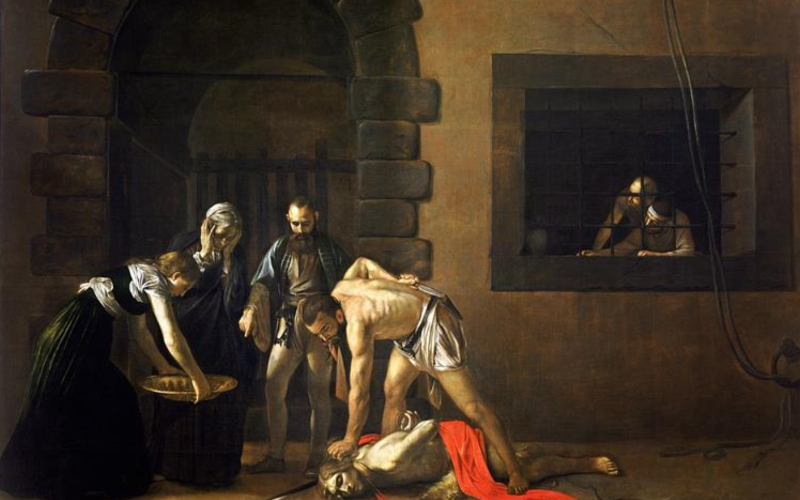Italian painter Caravaggio created an oil painting titled The Beheading of Saint John the Baptist.
The painting is frequently cited as Caravaggio’s masterpiece and “one of the most important works in Western painting,” according to Andrea Pomella in Caravaggio: An Artist through Images (2005).
One of the top ten works of art ever created, according to Jonathan Jones, is The Beheading of Saint John the Baptist: “Death and human cruelty are laid bare by this masterpiece, as its scale and shadow daunt and possess the mind.”
The painting is 12 feet (3.7 meters) by 17 feet (5.2 meters) and is made of oil on canvas. The chiaroscuro technique is used to emphasize the vivid red and warm yellow colors that are typical of the Baroque era.
The picture shows John the Baptist being executed while Salome waits nearby holding a golden platter ready to receive his head. The executioner draws his dagger to complete the beheading as another woman, who has been referred to as Herodias or simply a witness who notices that the execution is improper, watches in disbelief.
The scene, which is well-known among Italian artists in general and among Caravaggio himself, was more directly inspired by the Golden Legend than by the Bible.
The Baptist’s bloody throat is where Caravaggio inscribed his signature, making it the only piece of art he ever created to do so. The image has a lot of empty space, but the figures are roughly life size due to the size of the canvas.
Caravaggio drew inspiration for his paintings from his recollections of his time spent in a Knights of Malta prison. His later paintings are recognizable by the sparse use of props and the lack of detail in the used props.
The Knights of Malta had commissioned the painting, which was finished in 1608 in Malta. It was the largest altarpiece that Caravaggio would ever create. It continues to hang in St. John’s Co-Cathedral, where Caravaggio was enshrined and served for a brief time as a knight.
Caravaggio’s service to the Order was, however, short and troubled because he soon became a wanted man after fleeing while being held for an unreported crime. About six months after his induction, Caravaggio was defrocked in absentia by the Order as a “foul and rotten member,” and the ceremony was held in front of this very painting in the Oratory.
Caravaggio created a number of works that show the immediate aftermath of the incident shown here. The National Gallery in London has one of these on display, while the Royal Palace in Madrid has the other. The image that Caravaggio is said to have sent in an effort to placate Alof de Wignacourt, the Grand Master of the Knights who expelled Caravaggio, is thought to be one of these, but this is not certain.
The Beheading of Saint John the Baptist has suffered severe damage, but it underwent some restoration in the 1950s before a significant exhibition in Rome in 1955–1956 that significantly increased public awareness of the piece. Modern viewers can now clearly see Caravaggio’s signature in the blood thanks to the restoration.
There is some disagreement regarding the signature. However, it is widely believed that Caravaggio signed “I, Caravaggio, did this” in confession of some crime—possibly connected to the 1606 death of Ranuccio Tomassoni at the hands of Caravaggio, which had caused the painter to flee Rome. The work is signed f. Michelang.o (the f to indicate his brotherhood in the order).


